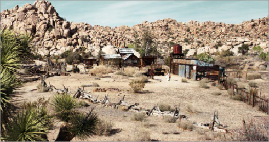

< Previous | Contents | Next >
There is another family of tools, the HSL, RGB, and Luma Qualifiers, that provide even more specific control, and they’re useful for adjusting ranges of color to either play into or against the audience expectations for color in a scene. Substantial research into what has been termed “memory color” shows that people have finely tuned expectations for the hues of particular subjects, such as
flesh tone, foliage greens, and sky blues. Deviation from these expectations can create a sense of something being not quite right, which can be either detrimental or beneficial, depending on your goals for a particular scene.
HSL Qualification is effectively a chroma keyer that lets you sample the image to create a key that’s used to define where to apply a specific correction. For example, if you’re happy with the rest of the image, but the skin tone of the actor has an unhealthy green tinge to it as a result, you can isolate the color of that actor’s skin and adjust it to a healthier hue.


Source Image HSL qualification on the skin

Skin now has warmer grade
![]()
Another common example is the adjustment of skies. If you’re aiming for a gorgeous summer day, a washed out sky in the source media can be a bit of a bummer. However, using qualification it’s easy to isolate that wedge of blue, then push and pull it into just the right amount of summertime joy.


Originally graded scene HSL qualification of the sky
